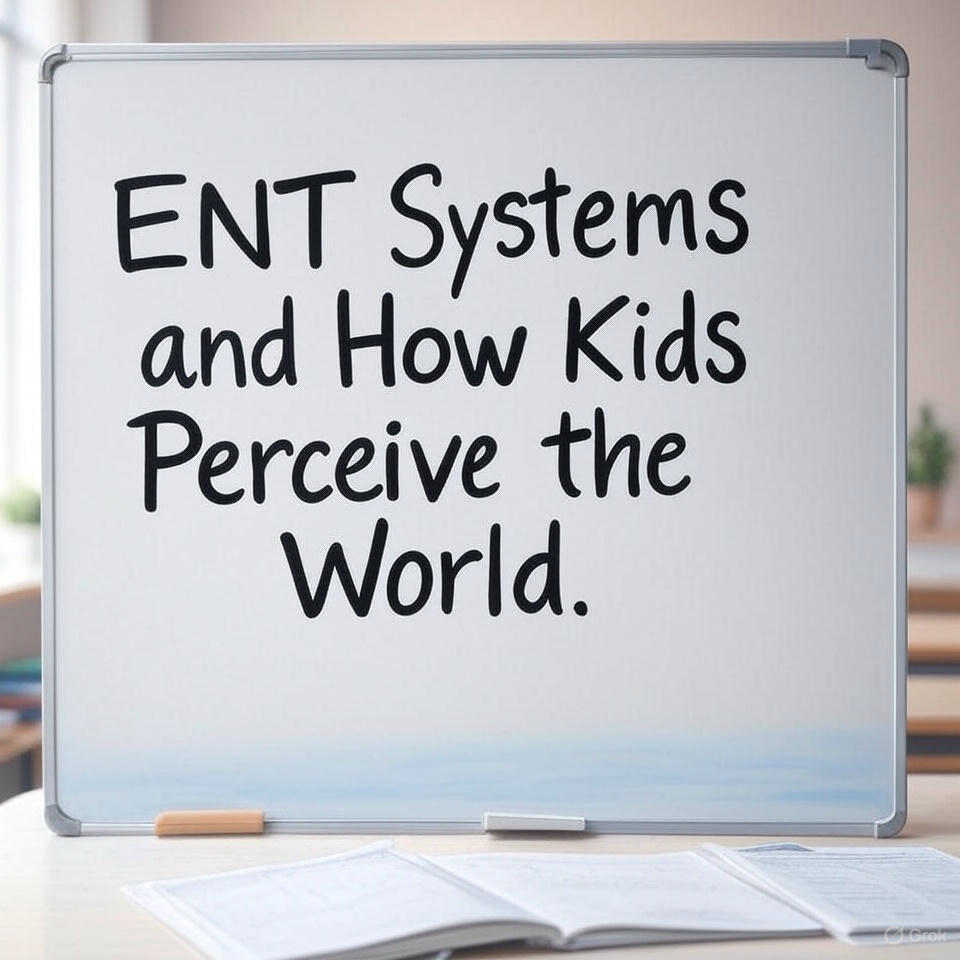Children experience the world in quiet, unnoticed ways. What seems like a passing cough, stuffy nose, or echoing voice can guide how they grow, think, and speak. ENT systems—the ears, nose, and throat—may be small, but they lay down the foundation of how a child interacts with everything around them.
The Ear: Sound, Stability, and the First Lessons
How Hearing Opens the Door to Understanding
- Hearing is a child’s first language teacher. Even before they talk, they’re absorbing tone, rhythm, and emotion from every surrounding sound.
- Soft delays in hearing may lead to quiet delays in speech. Children might not pronounce words clearly or understand social cues if they’ve had frequent, unnoticed ear blockages.
Balance Begins Deep Inside the Ear
- The vestibular system is like an inner compass. It helps kids know which way is up, where their feet are, and how to stay steady on a bike or balance beam.
- Children with minor vestibular disruptions may stumble often. What looks like clumsiness may be their body trying to catch up with their inner balance.
The Nose: Memory, Breathing, and Emotional Anchors
Smell Ties Into Emotion and Identity
- Smells create emotional fingerprints. A child may associate grandma’s house with cinnamon or feel calm at bedtime because of a favorite lotion.
- A blocked nose can affect emotional security. Without proper ENT care, children may feel unsettled or disconnected when their sense of smell is impaired.
Breathing Through the Nose Helps More Than Just Breathing
- Nasal breathing provides a steady oxygen flow. This helps with mental clarity, sleep quality, and daytime focus.
- Mouth breathing can signal underlying ENT issues. It might mean the nasal passages are blocked, quietly impacting growth or rest.
The Throat: Language, Identity, and Nourishment
Speech Starts With Comfort
- Discomfort in the throat can make children hesitant to talk. They may avoid words, whisper instead of shout, or seem withdrawn in conversation.
It’s Not as Easy as It Appears to Dwell
- It takes a symphony of muscles to eat. The tongue, throat, and airway work together to securely transport food.
Sensory Growth: The Symphony of ENT Systems Working Together
Sound, Smell, and Speech Must Collaborate
- Children use all three ENT senses to construct their reality. They communicate via speaking, use smell to find their way, and utilize hearing to comprehend.
- Even a minor issue in one area changes the whole experience. A blocked ear might lead to poor pronunciation, while a dry throat affects confidence.
Behavior Reflects What Words Can’t Explain
- Children don’t always say what hurts—they show it. They may cry more, avoid crowds, or act out during meals.
- Many emotional reactions trace back to quiet ENT issues. They’re not acting out; they’re reacting to unseen discomfort.
Growing Up: Changing ENT Needs and Identity Formation
From Baby to Teen, ENT Changes Evolve
- The voice deepens, allergies appear, and sound sensitivity shifts. These are natural, but they change how kids experience their world.
- ENT maturity is a moving target. What wasn’t an issue at age 5 might appear at age 12.
A Voice Isn’t Just Sound—It’s Self-Expression
- A child’s voice is a part of their identity. Whether loud, high, or raspy—it’s how they tell the world who they are.
- If ENT issues alter their voice, their personality might seem to shift. It’s not just physical—it’s deeply emotional.
Environment Meets Biology: How Surroundings Shape ENT Responses
Everyday Factors Influence ENT Function
- Noise levels, air quality, and allergens matter. A child living near traffic might face constant background noise; another exposed to dust may experience frequent nasal irritation.
- Small environmental shifts can support ENT well-being.
Family History and ENT Traits
- Some ENT sensitivities are inherited. A child with a parent prone to sinus issues might experience similar discomfort.
- Recognizing inherited traits normalizes the experience. It helps families prepare, not panic.
Conclusion
ENT care plays a quiet but powerful role in how children grow and connect with the world around them. These care influence a child’s listening, memory, emotions, and self-expression in addition to controlling bodily processes. When we begin to notice how ENT health influences early development, we gain a deeper appreciation for the way children learn, form bonds, and find their voice.
FAQs About ENT Care in Child Development
1. What are the subtle signs of ENT discomfort in children?
Children might avoid loud places, chew with difficulty, breathe noisily during sleep, or talk less—these signs hint at ENT sensitivity.
2. Can a child’s learning be affected by ENT issues?
Absolutely. Trouble hearing or sleeping due to nasal congestion can affect focus, speech development, and classroom performance.
3. Why is the sense of smell so strong in childhood?
The sense of smell connects directly to memory and emotion. Kids form deep associations with scents that help them feel secure or cautious.
4. How does the throat impact daily childhood behavior?
The throat influences voice, eating, and communication. If something feels off, it may show as irritability, silence, or picky eating.






